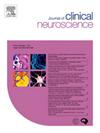Factors associated with ICU stays after endovascular treatments for unruptured intracranial aneurysms: A review study
IF 1.9
4区 医学
Q3 CLINICAL NEUROLOGY
引用次数: 0
Abstract
Background
For unruptured intracranial aneurysms (UIAs), conservative management is often possible. However, when direct treatment is warranted, endovascular treatments (EVTs) provide an effective minimally invasive approach. These procedures still necessitate careful patient monitoring, frequently in the Intensive Care Unit (ICU). The factors leading to ICU admission for these patients remains an area of debate.
Objective
This systematic review aims to highlight existing literature and identify gaps in understanding the factors contributing to ICU admission following EVTs for UIAs.
Methods
We utilized the Nested Knowledge Autolit semi-automated software to gather studies published before April 2024. We followed the Preferred Reporting Items for Systematic Reviews and Meta-Analyses (PRISMA) guidelines, and included studies that met predetermined population, intervention, control, and outcomes (PICO) criteria. Statistical analysis was performed using R software.
Results
We retrieved 181 studies and 9 met our inclusion criteria. There was significant variability across these studies on what factors they reported. Across included studies there were 8,189 patients, with 5,620 being placed in the ICU following EVTs for UIAs. Analysis revealed that anterior aneurysm location, aneurysm-related symptoms, and procedure length were significant factors associated with ICU admission. The overall ICU admission rate was approximately 24.61 per 100 patients.
Conclusion
This review underscores the need for further research to understand the factors we found associated with ICU admission following EVTs for UIAs. Additional studies are needed that use a standardized approach to collect data on patient demographics, aneurysm characteristics, procedural details, and postoperative outcomes. Such studies will allow for concrete recommendations to be made on ICU needs and prognostic calculators to be developed in order to support clinical decisions and lower healthcare costs.
求助全文
约1分钟内获得全文
求助全文
来源期刊

Journal of Clinical Neuroscience
医学-临床神经学
CiteScore
4.50
自引率
0.00%
发文量
402
审稿时长
40 days
期刊介绍:
This International journal, Journal of Clinical Neuroscience, publishes articles on clinical neurosurgery and neurology and the related neurosciences such as neuro-pathology, neuro-radiology, neuro-ophthalmology and neuro-physiology.
The journal has a broad International perspective, and emphasises the advances occurring in Asia, the Pacific Rim region, Europe and North America. The Journal acts as a focus for publication of major clinical and laboratory research, as well as publishing solicited manuscripts on specific subjects from experts, case reports and other information of interest to clinicians working in the clinical neurosciences.
 求助内容:
求助内容: 应助结果提醒方式:
应助结果提醒方式:


